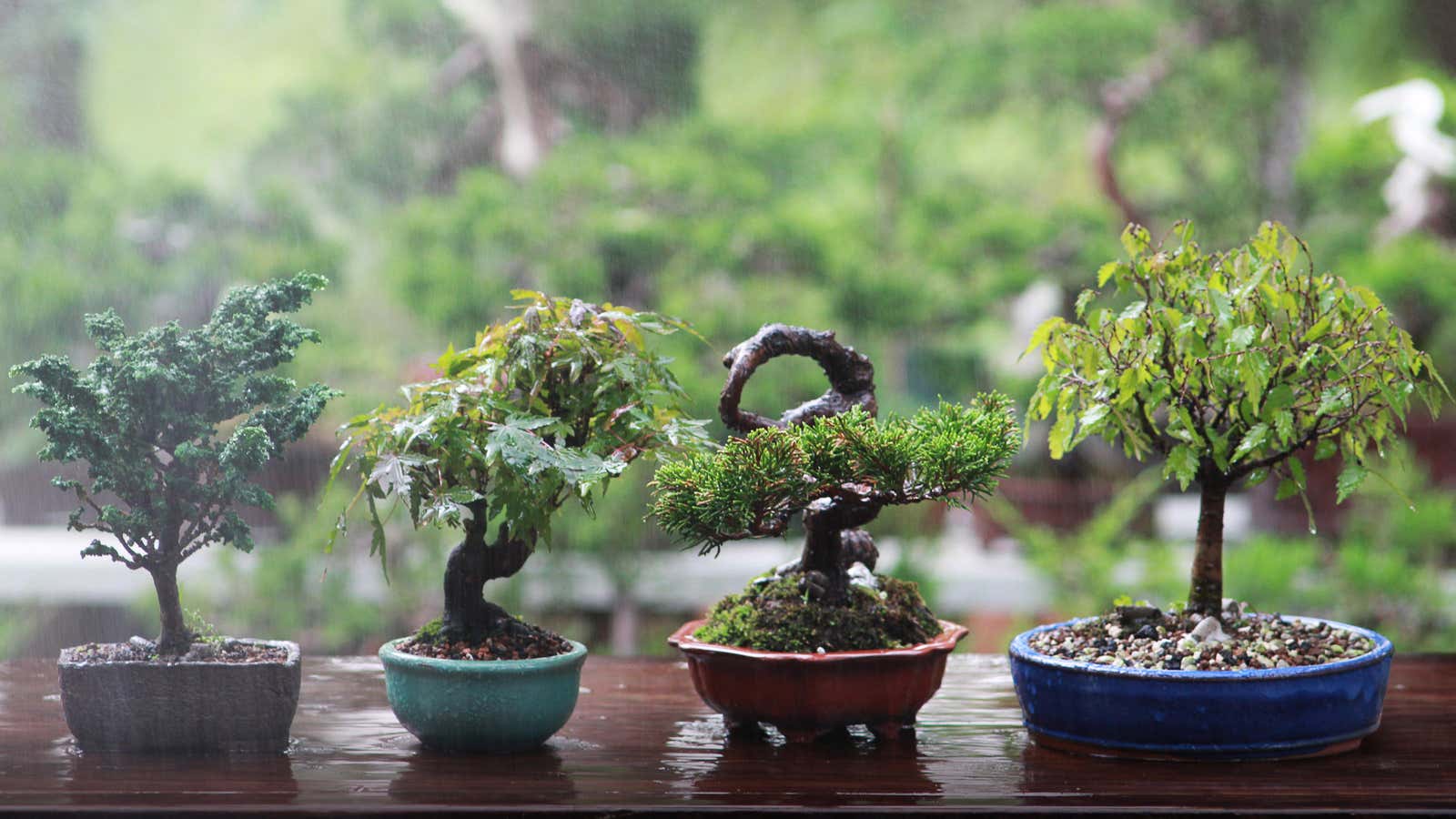How to Start Growing Bonsai Without Killing Them

When you hear the phrase “bonsai tree,” you’re probably thinking of those tiny, ornate trees that people often use as some sort of table decoration. But bonsai is actually not a type of tree at all – the word “bonsai” refers to the art form and horticultural method of growing miniature landscapes. The art of bonsai originated in China and developed when Japan narrowed the technique down to miniature trees rather than entire gardens. Bonsai cultivation became a trend that spread to the United States after World War II and is now practiced in homes around the world. This growing method requires precise pruning and careful plant maintenance to keep the fragile trees alive and maintain their miniature structure . For newbies, this process requires some training, but the mental health benefits can be very serious. Here are three types of plants that help beginners master the art of bonsai.
What are the benefits of bonsai gardening?
Bonsai is also called the “tree of life”. Caring for them is believed to reduce stress , promote focus, and help relieve symptoms of depression. Less perceptibly, some believe that miniature trees lend magical properties to a home and that leaving them can bring prosperity and good fortune . This is a surprisingly deep hobby that can be found with a little upfront investment – just a plant and a couple of small scissors will help you get there. (Of course, like any other pastime, there is a lot of money to be invested in art too.)
How to care for different types of bonsai
Magical thinking aside, the plants themselves do not require particularly cumbersome maintenance. Depending on the variety, they require very little light, which, combined with their small size, means you can place them almost anywhere in your home. With due care, unique trees turn into houseplants.
With all plants, some are more complicated than others. Because bonsai is an art, plants of different styles require special care. As a beginner, the first thing you want to do is keep the plant alive while you learn the ropes.
How to keep ficus bonsai alive
Ficus bonsai is an upright tree with flat, bright green leaves. Although bonsai plants can survive in low light, this bonsai should be placed near a bright spot in your home where it can get some sun exposure at least occasionally. Ficuses are typically tropical plants used to humid climates, but these resistant specimens only need watering once a week and are easy to spray occasionally. Most bonsai plants require similar soil types , including lava stone, pumice stone, or organic potting compost. These soils provide proper drainage and moisture retention. Bonsai potting soil can be purchased at most garden stores for $ 9 to $ 15 per bag (depending on the type).
Pruning requires pruning old leaves after new growth reaches 7-10 cm . You will need to prune old yellowed leaves before they fall off to make room for new shoots and keep the plant diminutive and form-free. Ficus usually costs between $ 20 and $ 60 , depending on the seller and the original size. Ficuses are quite self-contained and will stay quite small (depending on the size of the pot), making them ideal for beginners still developing their bonsai skills.
How to grow bonsai from Chinese elm
Chinese elm bonsai is unique in shape, with a curved, upright stem forming small, dark green leaves. These slow-growing plants give the beginner ample time to try out their technique. Chinese elms love direct sunlight in spring, but the summer sun is too strong, so keep them in a bright place at home, but remember to give them shade during the summer months. Watering is easy enough – they don’t require a lot of moisture, so over-watering can lead to root rot. Bonsai Tree Gardener recommends: “Check it every few days and [and] water when the top inch of soil is dry to the touch.”
Pruning is only necessary during the spring months to promote germination during the growing season and help the tree maintain its miniature shape. Chinese elm requires little wiring (name of the process used to shape bonsai plants); trimming alone will keep their shape. Since these trees are popular for their unique look, they can be slightly more expensive, ranging from $ 35 to $ 100. For less than $ 100, beginners can buy a starter kit with everything from pruners to fertilizers to get started.
How to care for a jade bonsai
One of the easiest bonsai to maintain is a variety of jade. Since jade trees are succulents, they need very little attention, but they have an unusual and attractive appearance. They grow upright and their small plump green leaves grow along the stem. They can be handled in the same way as juicy, requiring very little water, but with an excellent drainage system. Water them approximately every 10 to 20 days . Unlike other bonsai varieties, you’ll want to place them in a dry, hot place with plenty of sun to mimic the desert conditions in which they thrive.
Pruning jade is fun because you really can’t go wrong. You can chop it down to its stems without killing it. Pruning keeps the plant smaller, encourages new growth and thickens the trunk . Jade plants easily plug into electrical wiring, allowing tiny plants to form in any direction you like, making them some of the most durable bonsai for beginners.
Jade plants are not the cheapest bonsai variety, but they are more readily available than Chinese elm. A jade bonsai will cost between $ 45 and $ 80 , depending on the size. You can practice pruning as much as you like, and if you forget to water them, it’s okay – they can be easily revived with a little water.